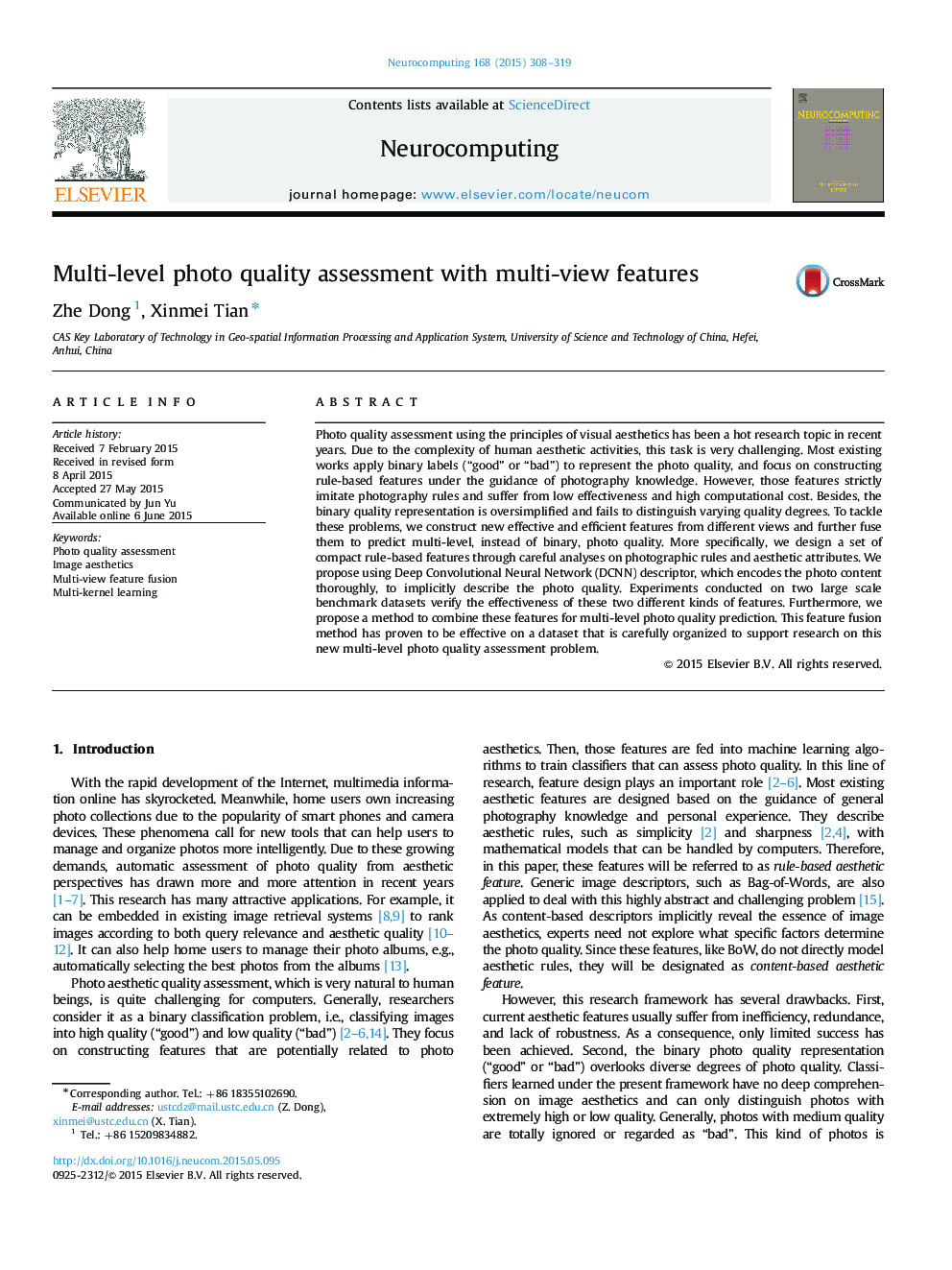| Article ID | Journal | Published Year | Pages | File Type |
|---|---|---|---|---|
| 411747 | Neurocomputing | 2015 | 12 Pages |
Photo quality assessment using the principles of visual aesthetics has been a hot research topic in recent years. Due to the complexity of human aesthetic activities, this task is very challenging. Most existing works apply binary labels (“good” or “bad”) to represent the photo quality, and focus on constructing rule-based features under the guidance of photography knowledge. However, those features strictly imitate photography rules and suffer from low effectiveness and high computational cost. Besides, the binary quality representation is oversimplified and fails to distinguish varying quality degrees. To tackle these problems, we construct new effective and efficient features from different views and further fuse them to predict multi-level, instead of binary, photo quality. More specifically, we design a set of compact rule-based features through careful analyses on photographic rules and aesthetic attributes. We propose using Deep Convolutional Neural Network (DCNN) descriptor, which encodes the photo content thoroughly, to implicitly describe the photo quality. Experiments conducted on two large scale benchmark datasets verify the effectiveness of these two different kinds of features. Furthermore, we propose a method to combine these features for multi-level photo quality prediction. This feature fusion method has proven to be effective on a dataset that is carefully organized to support research on this new multi-level photo quality assessment problem.
